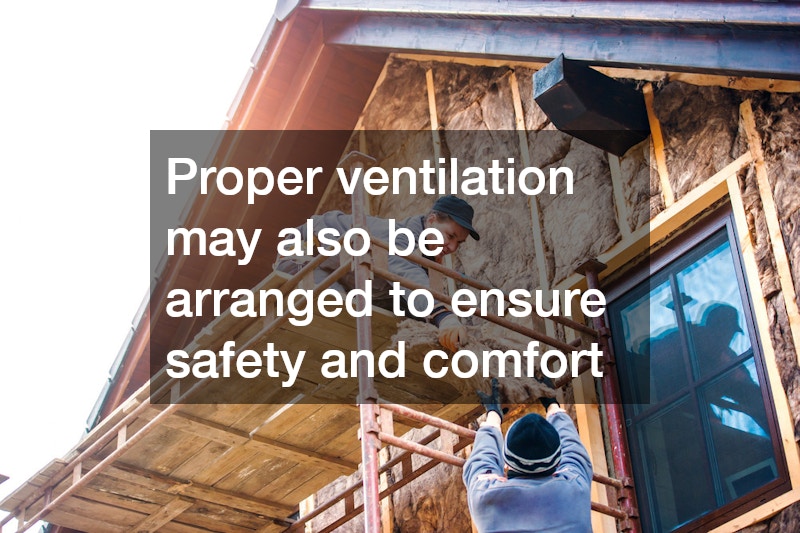Explore the various techniques that spray foam insulation services utilize to ensure that your home is properly prepared for the installation process. Understanding these techniques can help homeowners make informed decisions and optimize their insulation efficiency.
Insulation plays a crucial role in maintaining a comfortable and energy-efficient home, and spray foam insulation has quickly become one of the most effective options available today. Unlike traditional insulation materials, spray foam expands to fill every crack and crevice, creating an airtight seal that helps regulate indoor temperatures year-round.
Professional spray foam insulation services ensure this advanced material is applied correctly and safely, maximizing its benefits for energy savings, comfort, and structural integrity. By hiring experts, homeowners can enjoy a more efficient home environment while reducing utility costs and improving overall indoor air quality.
Understanding Spray Foam Insulation
Spray foam insulation is a versatile material used to insulate and air-seal homes. This unique insulation system involves a chemical reaction that causes the foam to expand upon application, effectively filling gaps and providing a robust barrier against heat loss and moisture. The composition of spray foam makes it ideal for a variety of applications, from attics and basements to crawl spaces and walls.
The spray foam consists primarily of polyols and isocyanates, which combine to create an expanding foam. When applied correctly, it adheres to surfaces, creating a solid and continuous seal that prevents air leaks. This characteristic is especially beneficial in climates that demand more energy-efficient heating and cooling solutions.
Moreover, spray foam insulation can significantly enhance the energy efficiency of a home. Minimizing airflow helps maintain consistent indoor temperatures and reduces the workload on heating and cooling systems. Homeowners often report noticeable decreases in their energy bills after switching to spray foam insulation.
Comparing Materials
Many homeowners wonder how spray foam insulation stacks up against traditional materials like fiberglass and cellulose. Each material has its unique characteristics, advantages, and disadvantages. In general, spray foam insulation offers a higher R-value per inch than fiberglass, which means it provides better thermal resistance in a smaller thickness.
In comparing spray foam to cellulose, it’s crucial to note that while cellulose may be made from recycled paper and is considered an eco-friendly option, it lacks the air-sealing properties that spray foam insulation inherently possesses. This difference can impact long-term energy efficiency, especially in older homes with numerous gaps and leaks.
Additionally, the installation of fiberglass and cellulose requires specific techniques to avoid compression and gaps, which can compromise their insulation effectiveness. In contrast, spray foam expands upon application, ensuring full coverage and better overall performance in sealing out unwanted air and moisture.
Following the Steps
The process of applying spray foam insulation involves several crucial steps that must be executed with precision. Prior to installation, a thorough inspection of the space is necessary to assess the condition and identify any areas that need repair or additional attention. This step ensures that the application of spray foam will be optimized for effectiveness.
After the inspection, preparation of the area is critical. This typically involves cleaning the surfaces to remove dirt and debris that could interfere with adherence and sealing any holes that may compromise the integrity of the insulation. Proper ventilation may also be arranged to ensure safety and comfort during the application process.
Once preparations are complete, specialized equipment is used to apply the foam. The trained professionals will use safety gear and spray the foam systematically, ensuring it expands and fills the designated areas. Post-application, the foam needs time to cure properly and may require inspection to confirm that it has formed a solid seal, ready for the finishing touches.
Preparing the Space
Preparing your home for spray foam insulation is essential for achieving optimal results. One of the primary preparation steps involves clearing the space where the insulation will be applied. This may require moving furniture, storing items away from the work area, and ensuring easy access to walls and ceilings.
Moreover, sealing any existing gaps and cracks can enhance the overall effectiveness of the insulation. Before application, it is advisable for homeowners to check around windows, doors, electrical outlets, and plumbing fixtures for leaks that should be sealed to maximize the performance of the spray foam.
Ensuring adequate ventilation is another crucial aspect of preparation. Proper airflow not only helps dissipate fumes during the installation process but also contributes to a safe working environment for the contractors. Homeowners may need to discuss ventilation options with their spray foam insulation services before starting the project.
Understanding the techniques and steps involved in preparing your home for spray foam insulation can greatly enhance the effectiveness of your insulation project. By doing your research and working with qualified professionals, you can make the most of this innovative insulation solution. Professional spray foam insulation services offer long-lasting benefits that go far beyond simple temperature control. With expert installation, homeowners gain superior energy efficiency, enhanced comfort, and protection against moisture and air leaks. This modern insulation method not only reduces monthly energy bills but also contributes to a more sustainable and durable home. By investing in professional spray foam insulation, you ensure your property remains comfortable, efficient, and well-protected for years to come.




